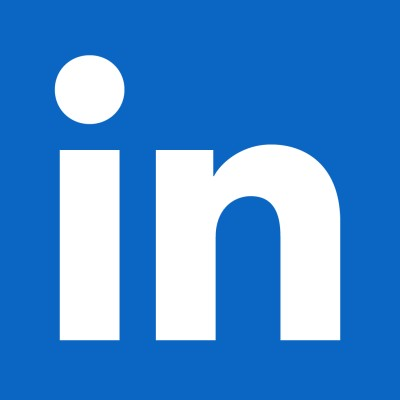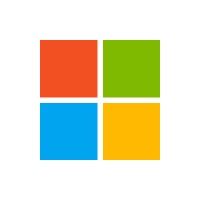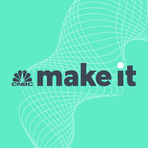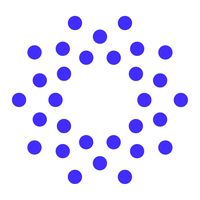LinkedIn's Bold Move: Free User Verification to Combat Misinformation
October 29, 2024, 7:06 pm

Location: United States, California, Mountain View
Employees: 10001+
Founded date: 2002
Total raised: $387.7M
In a digital landscape riddled with deception, LinkedIn is stepping up. The professional networking giant is on a mission to verify its users—free of charge. This initiative is not just a marketing gimmick; it’s a necessary response to the growing tide of misinformation and fake accounts that plague social media.
Since April 2023, LinkedIn has been quietly working on its verification process. As of late October 2024, the platform has verified over 55 million users. That’s a staggering number, especially when compared to its competitors. Unlike X and Meta, which charge for verification, LinkedIn is making this service accessible to all. It’s a refreshing change in a world where authenticity often comes with a price tag.
The motivation behind this move is clear. The rise of artificial intelligence has made it easier than ever to create deepfakes and manipulate images. The line between reality and fabrication is blurring. LinkedIn recognizes that this poses a significant challenge. Misinformation can spread like wildfire, and fake recruiters have been a persistent issue on the platform. By verifying users, LinkedIn aims to restore trust and credibility.
The verification process is straightforward. Users can verify their accounts through their company email addresses if their employers are part of the program. For those whose companies aren’t participating, LinkedIn offers an alternative. Users can submit a government-issued ID through verification partners like Clear and Persona. LinkedIn covers the costs, making it a hassle-free experience for users.
This initiative is not just about individual accounts. LinkedIn is also focusing on verifying job postings and company pages. This comprehensive approach aims to create a safer environment for job seekers and professionals alike. The platform’s vice president of trust and safety has emphasized the importance of authenticity in shaping the future of the internet. It’s about building a reliable community where users can connect without fear of deception.
The numbers speak volumes. Verified users on LinkedIn enjoy a 60% increase in profile views compared to their unverified counterparts. They also receive 30% more connection requests. This data highlights the tangible benefits of verification. It’s not just a badge; it’s a ticket to greater visibility and networking opportunities.
LinkedIn’s verification effort is ambitious. The company aims to verify 100 million users by 2025. This goal is not just a number; it represents a commitment to fostering a trustworthy online environment. In a world where skepticism is rampant, LinkedIn is positioning itself as a beacon of reliability.
The stakes are high. Misinformation can have real-world consequences. Fake accounts can lead to scams, lost job opportunities, and damaged reputations. By tackling these issues head-on, LinkedIn is not only protecting its users but also enhancing its own brand integrity.
Microsoft, which acquired LinkedIn for $26.2 billion in 2016, is backing this initiative. The tech giant understands the value of trust in the digital age. By investing in user verification, LinkedIn is aligning itself with broader trends in online safety and security.
As LinkedIn moves forward, it faces challenges. The platform must continue to refine its verification process and adapt to new threats. Scammers are constantly evolving, and LinkedIn must stay one step ahead. The company has claimed that its moderators remove 99% of fake accounts before they can cause harm. This level of vigilance is crucial in maintaining user trust.
Moreover, LinkedIn’s verification initiative comes at a time when users are increasingly concerned about privacy. The platform has faced scrutiny over its data practices, especially regarding the use of user information for training AI models. Transparency will be key as LinkedIn navigates these waters. Users need to feel secure in sharing their information, knowing it will be protected.
In conclusion, LinkedIn’s free user verification is a bold and necessary step in the fight against misinformation. By prioritizing authenticity, the platform is not only enhancing user experience but also setting a standard for other social media networks. As the digital landscape continues to evolve, LinkedIn’s commitment to verification may very well redefine how we perceive trust online. In a world where anyone can be anyone, LinkedIn is striving to ensure that real connections prevail.
Since April 2023, LinkedIn has been quietly working on its verification process. As of late October 2024, the platform has verified over 55 million users. That’s a staggering number, especially when compared to its competitors. Unlike X and Meta, which charge for verification, LinkedIn is making this service accessible to all. It’s a refreshing change in a world where authenticity often comes with a price tag.
The motivation behind this move is clear. The rise of artificial intelligence has made it easier than ever to create deepfakes and manipulate images. The line between reality and fabrication is blurring. LinkedIn recognizes that this poses a significant challenge. Misinformation can spread like wildfire, and fake recruiters have been a persistent issue on the platform. By verifying users, LinkedIn aims to restore trust and credibility.
The verification process is straightforward. Users can verify their accounts through their company email addresses if their employers are part of the program. For those whose companies aren’t participating, LinkedIn offers an alternative. Users can submit a government-issued ID through verification partners like Clear and Persona. LinkedIn covers the costs, making it a hassle-free experience for users.
This initiative is not just about individual accounts. LinkedIn is also focusing on verifying job postings and company pages. This comprehensive approach aims to create a safer environment for job seekers and professionals alike. The platform’s vice president of trust and safety has emphasized the importance of authenticity in shaping the future of the internet. It’s about building a reliable community where users can connect without fear of deception.
The numbers speak volumes. Verified users on LinkedIn enjoy a 60% increase in profile views compared to their unverified counterparts. They also receive 30% more connection requests. This data highlights the tangible benefits of verification. It’s not just a badge; it’s a ticket to greater visibility and networking opportunities.
LinkedIn’s verification effort is ambitious. The company aims to verify 100 million users by 2025. This goal is not just a number; it represents a commitment to fostering a trustworthy online environment. In a world where skepticism is rampant, LinkedIn is positioning itself as a beacon of reliability.
The stakes are high. Misinformation can have real-world consequences. Fake accounts can lead to scams, lost job opportunities, and damaged reputations. By tackling these issues head-on, LinkedIn is not only protecting its users but also enhancing its own brand integrity.
Microsoft, which acquired LinkedIn for $26.2 billion in 2016, is backing this initiative. The tech giant understands the value of trust in the digital age. By investing in user verification, LinkedIn is aligning itself with broader trends in online safety and security.
As LinkedIn moves forward, it faces challenges. The platform must continue to refine its verification process and adapt to new threats. Scammers are constantly evolving, and LinkedIn must stay one step ahead. The company has claimed that its moderators remove 99% of fake accounts before they can cause harm. This level of vigilance is crucial in maintaining user trust.
Moreover, LinkedIn’s verification initiative comes at a time when users are increasingly concerned about privacy. The platform has faced scrutiny over its data practices, especially regarding the use of user information for training AI models. Transparency will be key as LinkedIn navigates these waters. Users need to feel secure in sharing their information, knowing it will be protected.
In conclusion, LinkedIn’s free user verification is a bold and necessary step in the fight against misinformation. By prioritizing authenticity, the platform is not only enhancing user experience but also setting a standard for other social media networks. As the digital landscape continues to evolve, LinkedIn’s commitment to verification may very well redefine how we perceive trust online. In a world where anyone can be anyone, LinkedIn is striving to ensure that real connections prevail.


